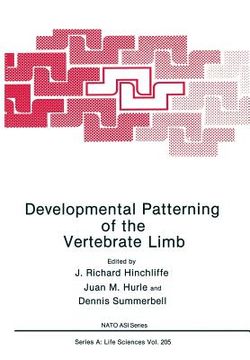Share
Developmental Patterning of the Vertebrate Limb (in English)
Hinchliffe, J. Richard ; Hurle, Juan M. ; Summerbell, Dennis (Author)
·
Springer
· Paperback
Developmental Patterning of the Vertebrate Limb (in English) - Hinchliffe, J. Richard ; Hurle, Juan M. ; Summerbell, Dennis
$ 52.09
$ 54.99
You save: $ 2.90
Choose the list to add your product or create one New List
✓ Product added successfully to the Wishlist.
Go to My WishlistsIt will be shipped from our warehouse between
Monday, June 17 and
Tuesday, June 18.
You will receive it anywhere in United States between 1 and 3 business days after shipment.
Synopsis "Developmental Patterning of the Vertebrate Limb (in English)"
Following pioneering work by Harrison on amphibian limbs in the 1920s and by Saunders (1948) on the apical ridge in chick limbs, limb development became a classical model system for investigating such fundamental developmental issues as tissue interactions and induction, and the control of pattern formation. Earlier international conferences, at Grenoble 1972, Glasgow 1976, and Storrs, Connecticut 1982, reflected the interests and technology of their time. Grenoble was concerned with ectoderm-mesenchyme interaction, but by the time of the Glasgow meeting, the zone of polarizing activity (ZPA) and its role in control of patterning was the dominant theme. Storrs produced the first intimations that the ZPA could be mimicked by retinoic acid (RA), but the diversity of extracellular masrix olecules, particularly in skeletogenesis, was the main focus of attention. By 1990, the paradigms had again shifted. Originally, the planners of the ARW saw retinoic acid (as a possible morphogen controlling skeletal patterning), the variety of extracellular matrix components and their roles, and the developmental basis of limb evolution as the leading contemporary topics. However, as planning proceeded, it was clear that the new results emerging from the use of homeobox gene probes (first developed to investigate the genetic control of patterning of Drosophila embryos) to analyse the localised expression of "patterning genes" in limb buds would also be an important theme.

